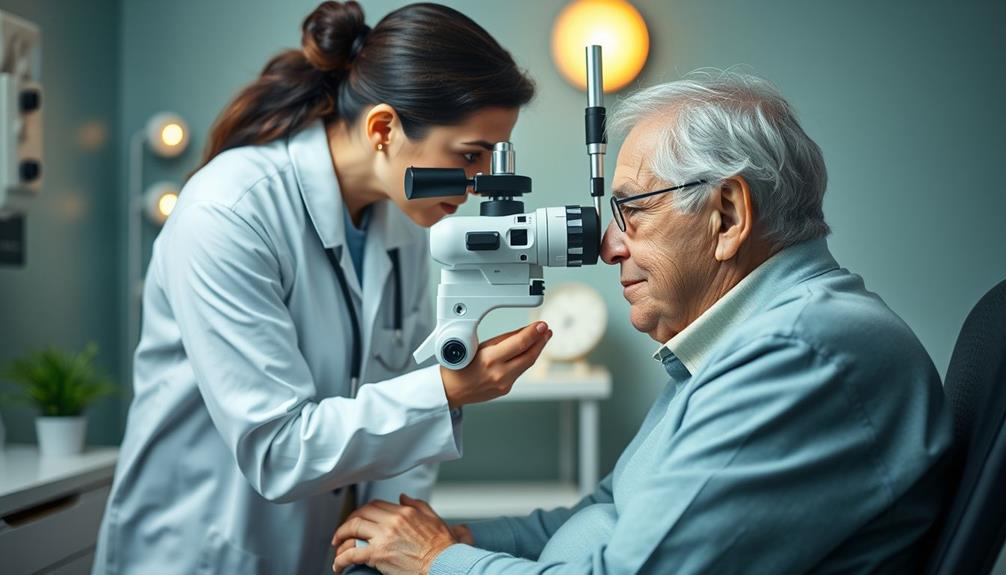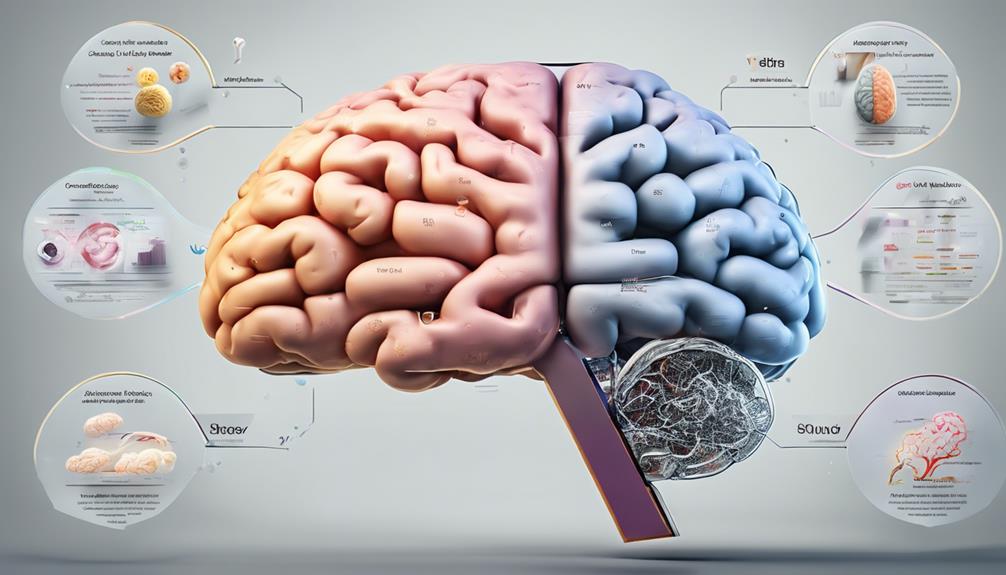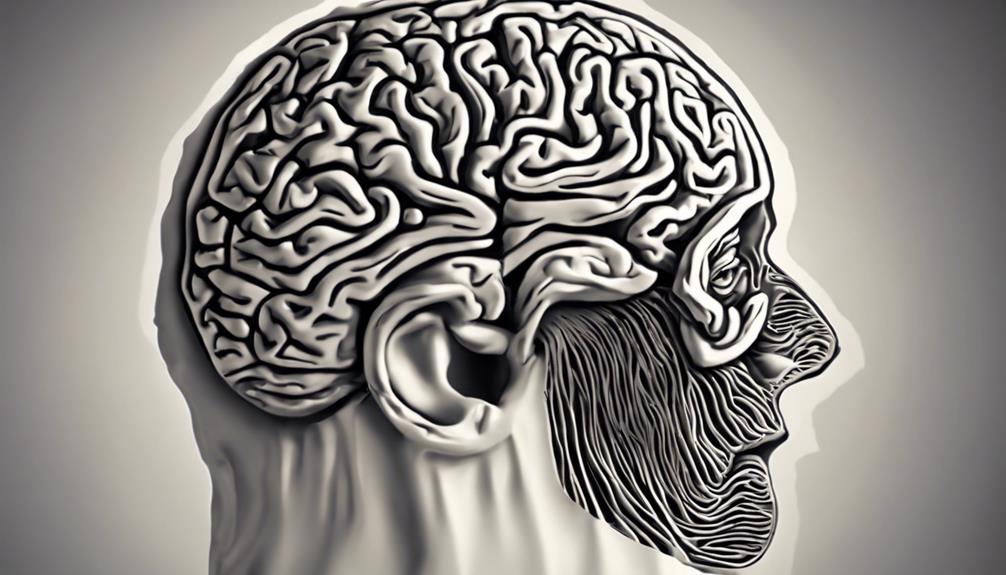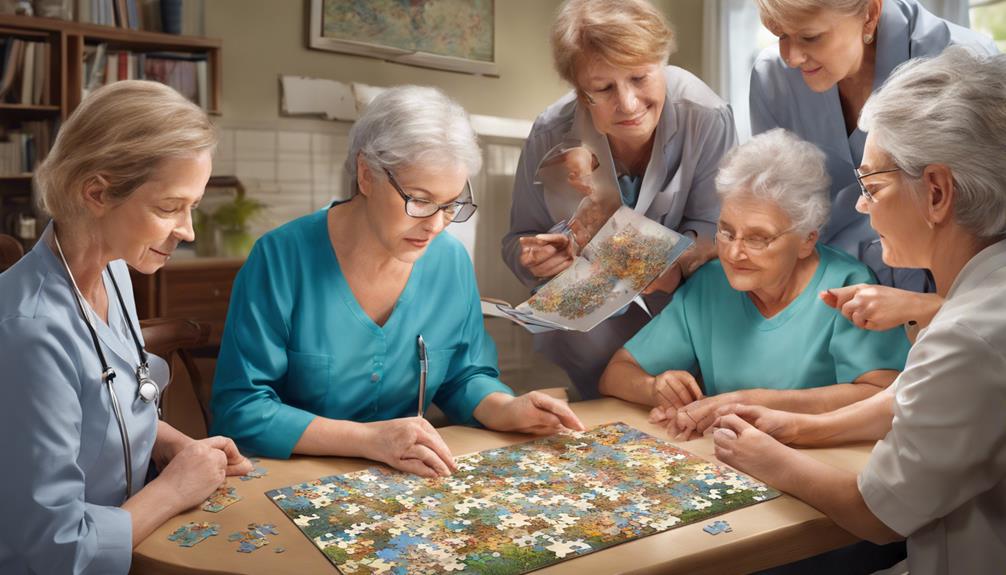Caregiver Support
Iowa Caucus Day Message: Honoring Caregivers and Demanding Change
Yearning for a transformative shift in caregiving recognition and support, discover how Iowa Caucus Day sheds light on the unsung heroes in society.

The classic saying serves as a reminder that actions speak louder than words.
As we reflect on Iowa Caucus Day, we find ourselves at a pivotal moment where the tireless efforts of caregivers deserve not just acknowledgment but meaningful change.
The dedication and sacrifices of caregivers shape the fabric of our society, yet their struggles often go unnoticed.
Stay tuned to discover how recognizing and supporting caregivers can pave the way for a more compassionate and sustainable future.
Key Takeaways
- Caregivers save billions through unpaid care.
- Comprehensive support services alleviate caregiver stress.
- Urgent policy changes needed for caregiver rights.
- Amplifying voices drives tangible caregiver support reforms.
Recognizing Caregivers' Selfless Contributions
Caregivers across the United States selflessly contribute an estimated $470 billion worth of unpaid care annually, embodying dedication and sacrifice in their roles.
As Family Caregivers, we understand the demanding nature of our responsibilities. Personally, I recall the story of caring for my elderly parent, juggling between their needs and my own. It's a labor of love that often goes unnoticed, yet our contributions to health care are invaluable. Balancing work, family, and personal well-being can be challenging, as we devote an average of 24.4 hours per week to caregiving duties.
The selfless acts of caregivers not only provide essential support to our loved ones but also save the nation billions. Despite the economic impact and the strain on our own health, many caregivers don't receive the necessary support. This underscores the urgency of demanding change in policies and services to assist caregivers in their noble endeavors. Our voices must be heard to ensure that caregivers receive the recognition, resources, and assistance they rightfully deserve.
Advocating for Caregiver Support Services

Advocates emphasize the critical need for comprehensive caregiver support services to address burnout and enhance well-being. Caregiver support services offer resources such as respite care, counseling, and education to assist caregivers in their roles. These services aim to alleviate caregiver stress, provide emotional support, and enhance caregiving skills. Support services may include caregiver support groups, online forums, and access to community resources. Funding for caregiver support services can vary by state and may rely on federal programs like the RAISE Family Caregivers Act.
In advocating for caregiver support services, it's crucial to consider the diverse needs of caregivers across different states. The availability and quality of these services can significantly impact the well-being of caregivers and, by extension, the quality of care provided to those in need. By supporting initiatives like the RAISE Family Caregivers Act, both the Iowa Democratic Party and the Republican Party can demonstrate their commitment to valuing and supporting caregivers. Let's work together to ensure that caregivers have the resources and support they need to continue their essential work.
Demanding Policy Changes for Caregivers
In the realm of caregiving policy reform, the urgent call for change resonates across various sectors and communities. Addressing the challenges faced by family caregivers is crucial, with caregivers experiencing emotional and physical exhaustion, financial strain, social isolation, and lack of support. The fragmented U.S. elder care system exacerbates issues like elder abuse, neglect, and financial exploitation, underscoring the need for significant policy changes. Presidential candidates hold a key role in tackling the national caregiver crisis by advocating for the protection of the elderly, caregivers' rights, and financial support.
| Policy Changes for Caregivers | Advocacy for Family Caregivers | Protecting the Elderly |
|---|---|---|
| Enhancing caregiver support services | Amplifying caregiver voices in policymaking | Strengthening legal frameworks against elder abuse |
| Implementing paid family leave policies | Lobbying for increased funding for caregiver programs | Establishing educational campaigns on recognizing and reporting elder abuse |
| Ensuring access to affordable healthcare | Collaborating with legislators for caregiver-friendly policies | Supporting initiatives for financial assistance to elderly in need |
Amplifying Caregivers' Voices for Reform

Amid the urgent calls for policy changes in the caregiving landscape, amplifying the voices of those directly impacted becomes a critical catalyst for reform. Caregivers play a crucial role in supporting their loved ones, facing various challenges along the way.
Here are three ways to amplify caregivers' voices for reform:
- Sharing Personal Stories: Encouraging caregivers to share their experiences can humanize the need for change in the elder care system. Personal narratives have the power to evoke empathy and drive home the urgency of caregiver support and policy change.
- Engaging in Advocacy Efforts: By actively participating in advocacy campaigns and initiatives, caregivers can ensure that their concerns are heard by policymakers. Advocacy plays a vital role in pushing for improved elder care system reform and protection against abuse and exploitation.
- Collaborating for Policy Change: Caregivers must engage with policymakers and demand concrete actions to address the challenges they face. Collective action is key in driving tangible changes that prioritize caregiver support and make long-term care more affordable.
Cultivating a Culture of Caregiver Appreciation
Cultivating a culture of appreciation for caregivers involves recognizing their invaluable contributions and advocating for policies that prioritize their well-being. Caregivers are the unsung heroes who provide essential care and support to loved ones facing health challenges. They juggle multiple responsibilities, often at the expense of their own physical, emotional, and financial well-being. Recognizing and supporting caregivers is paramount to prevent burnout and ensure the holistic care of both caregivers and care recipients.
Advocacy for caregivers involves pushing for policies that offer tangible support, such as access to respite care, financial assistance, and emotional counseling. By championing these causes, we can create a more nurturing environment that values and respects the sacrifices made by caregivers. It's essential to elevate the voices of caregivers in discussions around healthcare reform and social support systems.
Together, by acknowledging the vital role caregivers play and advocating for policies that meet their needs, we can foster a culture of appreciation that uplifts and sustains those who provide care for our loved ones.
Frequently Asked Questions
Who Won the Last Iowa Caucus?
We remember that Pete Buttigieg won the last Iowa Caucus with 26.2% of the state delegate equivalents, closely followed by Bernie Sanders with 26.1%.
The 2020 Iowa Caucus faced controversy due to technical issues with the caucus app, causing delayed reporting. Buttigieg's victory was a significant moment in the Democratic primary race.
These events marked a pivotal time in the political landscape, reflecting the complexities of the democratic process.
Do Democrats Caucus in Iowa?
Yes, Democrats caucus in Iowa.
The Iowa Democrats' caucus is a crucial event where unbound delegates and precinct committee persons are elected.
This process centers on addressing platform resolutions and party organization matters.
Unlike other states, Iowa Democrats don't express presidential preferences during the caucus, opting for a mail-in format.
It's a unique event that plays a significant role in shaping the party's direction and priorities.
Conclusion
As we celebrate Iowa Caucus Day and honor caregivers, let's remember that their unwavering dedication deserves more than just a day of recognition.
It's time for policymakers to listen, for society to appreciate, and for caregivers to receive the support they deserve.
Let's turn the tide on caregiving challenges and create a future where caregivers are valued, respected, and truly seen for the heroes they are.
Caregiver Support
When Do Hallucinations Occur as Dementia Progresses?
In advanced stages of dementia, hallucinations become more prominent, affecting perception and senses – uncover how to manage and understand these experiences.

As dementia progresses, hallucinations become more frequent and significant. They can impact our perception of reality and engage all of our senses, not just our vision. Conditions like Lewy body dementia and changes in the brain can play a role in shaping these hallucinatory experiences. Maintaining a consistent routine, offering reassurance, and creating a calming environment can help manage hallucinations in advanced dementia. Healthcare professionals can assist by monitoring symptoms and recommending non-pharmacological coping mechanisms. Caregivers play a crucial role in providing support and empathy. Understanding hallucinations is essential, and implementing effective strategies can benefit everyone involved. There is always more to discover in the realm of enhancing dementia care.
Key Takeaways
- Hallucinations in dementia often occur as the condition progresses.
- Increased frequency and intensity of sensory experiences mark later stages.
- Factors like Lewy body dementia and Alzheimer's disease can trigger hallucinations.
- Likelihood of experiencing hallucinations rises in advanced stages of dementia.
- Hallucinations may involve multiple senses, complicating care.
Early Signs of Hallucinations in Dementia
As dementia progresses, individuals may begin to experience early signs of hallucinations, such as visual disturbances or misinterpretations of reality. These early signs can be vital for both the individual and their caregivers. Visual disturbances may include seeing things that aren't there, like shadows moving or objects appearing distorted. Misinterpretations of reality can lead to confusion about the environment, causing distress or fear.
Changes in brain function play a significant role in these sensory experiences. The cognitive decline associated with dementia can disrupt the brain's ability to process information accurately, leading to the perception of things that aren't real. As the disease advances, hallucinations can manifest in various senses, not just visual. Individuals may also report hearing things that have no external source, adding another layer of complexity to their experiences.
Understanding these early signs of hallucinations in dementia is essential for providing appropriate care and support to individuals affected by the disease. By recognizing and addressing these symptoms early on, caregivers can help manage the challenges that come with cognitive decline and sensory disturbances.
Progression of Hallucinations in Dementia

Hallucinations in dementia progress significantly as the disease advances, particularly manifesting in heightened frequency and intensity of sensory experiences. In the middle to later stages of Alzheimer's and other forms of dementia, when significant brain changes occur, individuals may start experiencing visual hallucinations more frequently.
It's estimated that around 30% of Alzheimer's patients may encounter dementia-related psychosis, which often involves seeing things that aren't there. As dementia progresses, the frequency and intensity of these hallucinations tend to increase, affecting how individuals perceive reality. Additionally, these hallucinations can involve various senses, such as auditory, olfactory, tactile, and gustatory experiences, reflecting complex changes in the brain.
These sensory hallucinations can be distressing for both the individual and their caregivers. Therefore, it becomes essential to provide tailored support and management strategies as the disease evolves to help individuals cope with these challenging experiences.
Factors Influencing Hallucinations in Dementia
With the progression of dementia, various factors come into play that influence the occurrence and intensity of hallucinations experienced by individuals. Conditions such as Lewy body dementia and Parkinson's disease can heighten the chances of experiencing hallucinations. These hallucinations may stem from disruptions in the brain’s normal processing of information, particularly when there are changes in certain neurotransmitter systems. Atypical parkinsonism explained, refers to conditions that present with similar movement difficulties seen in Parkinson’s disease, but are often accompanied by additional symptoms like cognitive decline and more frequent hallucinations. Understanding these variations helps in managing both the motor and non-motor symptoms more effectively. Furthermore, understanding atypical parkinsonism is crucial for caregivers and medical professionals in providing accurate care, as these conditions may require tailored therapeutic approaches. Early recognition of the cognitive and psychiatric symptoms, alongside motor difficulties, allows for more comprehensive management strategies, helping to improve the quality of life for those affected.
In Alzheimer's disease, as brain cells deteriorate and cognitive functions decline, hallucinations may manifest. These visual or auditory perceptions can be triggered by neurotransmitter imbalances caused by abnormal protein buildup in the brain.
Hallucinations in dementia can involve multiple senses and tend to become more frequent as the disease advances. Providing support and care to individuals experiencing hallucinations is essential in managing their symptoms and ensuring their well-being.
Understanding the impact of these factors on hallucinations in dementia is vital for caregivers and healthcare providers to deliver appropriate care and support to those affected by the disease. By recognizing these influences, we can better assist people in dealing with the challenges associated with hallucinations in advanced dementia.
Managing Hallucinations in Advanced Dementia

In advanced dementia, our focus shifts towards creating a secure and tranquil environment to effectively manage hallucinations experienced by individuals. When dealing with hallucinations in advanced dementia, it's important to remember the following:
- Provide constant reassurance: Individuals experiencing visual hallucinations may feel frightened or confused. Offering reassurance and a comforting presence can help alleviate their distress.
- Maintain a consistent routine: Consistency in daily activities and environment can provide a sense of stability for individuals with advanced dementia. Predictability can help reduce anxiety and the likelihood of hallucinations.
- Implement calming strategies: Techniques such as soothing music, gentle lighting, and familiar objects can contribute to a peaceful atmosphere. Creating a safe and serene space is essential in managing hallucinations without resorting to medication.
Role of Healthcare Professionals in Hallucinations
Healthcare professionals play an essential role in recognizing and addressing hallucinations among individuals with dementia, guiding personalized care plans, and optimizing treatment outcomes. When working with dementia patients experiencing hallucinations, healthcare professionals assess the frequency and severity of these symptoms to determine the most appropriate interventions. By collaborating with caregivers, they develop personalized care plans tailored to managing hallucinations effectively. Monitoring medication effectiveness and potential side effects is crucial in optimizing treatment outcomes for patients. Furthermore, healthcare professionals provide valuable guidance on non-pharmacological approaches that can help reduce hallucinations and enhance the quality of life for individuals with dementia. Through a holistic approach that considers both pharmacological and non-pharmacological interventions, healthcare professionals aim to enhance the overall well-being of dementia patients and support their caregivers.
| Healthcare professionals | Role in Hallucinations | Impact |
|---|---|---|
| Assessing symptoms | Determining appropriate interventions | Improved quality of life |
| Collaborating with caregivers | Developing personalized care plans | Enhanced patient well-being |
| Monitoring medication | Optimizing treatment outcomes | Better symptom management |
| Providing guidance | Non-pharmacological approaches | Reduced hallucinations |
| Evaluating effectiveness | Ensuring personalized care plans | Support for caregivers |
Impact of Hallucinations on Caregivers

Experiencing hallucinations in individuals with dementia can greatly impact the well-being and stress levels of caregivers. Here are three ways in which hallucinations can affect caregivers:
- Essential Strain: Caregivers often experience heightened emotional strain when managing hallucinations in dementia patients. Witnessing a loved one going through distressing hallucinations can be emotionally challenging and draining.
- Communication Obstacles: Hallucinations can lead to communication difficulties between caregivers and individuals with dementia. Understanding and responding to the hallucinations require patience and effective communication strategies to provide proper care and support.
- Heightened Stress: Managing hallucinations in dementia patients can significantly increase the stress levels of caregivers. The constant vigilance and need for quick responses to the hallucinations can lead to overwhelming stress, requiring caregivers to seek additional support and interventions to cope effectively.
In order to support caregivers in handling the impact of hallucinations in dementia patients, it's essential to provide them with the necessary tools, resources, and guidance to navigate these challenges with resilience and compassion.
Seeking Support for Dementia-Related Hallucinations

Addressing the challenges of managing hallucinations in individuals with dementia requires proactive seeking of support and understanding. As dementia progresses to later stages, the likelihood of experiencing dementia-related hallucinations, particularly visual ones, increases. Approximately 30% of people with Alzheimer's may encounter these hallucinations, which can involve multiple senses, adding to the complexity of care. Caregivers play a vital role in providing support and empathy to individuals affected by these hallucinations. Seeking support becomes essential not only for the well-being of the individual with dementia but also for the caregivers who may feel overwhelmed by the progression of the disease.
Understanding the nature of dementia-related hallucinations and learning effective strategies to address them can greatly benefit both the individual and their caregiver. By seeking support from healthcare professionals, support groups, and educational resources, caregivers can gain valuable insights and techniques to navigate these challenging experiences with compassion and patience. Remember, you aren't alone in this journey, and seeking support is a proactive step towards providing the best care possible for those affected by dementia-related hallucinations.
Frequently Asked Questions
What Stage of Dementia Do Hallucinations Occur?
Hallucinations in dementia can occur in later stages as cognitive function declines. Visual hallucinations, seeing things that aren't there, are frequent in advanced dementia. Changes in the brain due to Alzheimer's progression may trigger hallucinations.
What Is the Most Common Type of Hallucination for a Person With Dementia?
Visual hallucinations are the most common type experienced by individuals with dementia. They often involve seeing things that aren't there. As dementia progresses, these hallucinations may become more frequent, impacting the individual's perception of reality.
What Stage Is Delusions in Dementia?
Delusions in dementia typically manifest in later stages, leading to fixed false beliefs like persecution or altered identity. Addressing these requires medical evaluation, patience, and tailored support to enhance well-being and quality of life for individuals.
What Stage of Dementia Is Hiding Things?
In the mid to late stages of dementia, hiding things often emerges as memory loss and confusion worsen. This behavior can result from various factors, like memory issues or paranoia. Caregivers may need creative solutions to address this distressing behavior.
Conclusion
As dementia progresses, hallucinations can occur at different stages, impacting both the individual and their caregivers. Understanding the early signs, progression, and factors influencing hallucinations is essential for managing them effectively.
Healthcare professionals play a key role in providing support and guidance for those experiencing dementia-related hallucinations. Caregivers must also seek support and resources to navigate the challenges that come with caring for someone with dementia.
Stay informed and proactive to guarantee the best possible care for your loved one.
Albert brings a wealth of knowledge and expertise to our writing team. With a background in caregiving and a deep understanding of the challenges faced by caregivers, Albert’s writing resonates with authenticity and empathy. He is committed to delivering high-quality content that empowers and supports caregivers on their journey.
Caregiver Support
Parkinson’s Disease and Vision Problems: Recognizing and Addressing Issues
Open your eyes to the vision challenges posed by Parkinson’s disease and discover how to effectively address these issues for a better quality of life.

If you have Parkinson’s disease, you may experience different vision problems such as dry eyes, double vision, and depth perception issues. These symptoms can significantly impact your daily life and increase the chances of accidents. It is important to have regular eye exams to address these challenges. Treatment options may include artificial tears for dryness, prism glasses for double vision, and proper lighting to improve depth perception. Maintaining open and effective communication with your healthcare provider can help tailor solutions that improve your quality of life. Being aware of these vision changes will empower you by providing you with the necessary tools for better management and support.
Key Takeaways
- Approximately 50% of individuals with Parkinson's experience vision problems, including dry eyes, double vision, and depth perception issues.
- Regular eye examinations are essential for early detection and management of vision changes; annual visits are recommended for those over 65.
- Treatment for dry eyes includes preservative-free artificial tears and warm compresses to alleviate discomfort and blurry vision.
- Double vision may be managed with prism glasses or eye patches, while good lighting can enhance depth perception and navigation safety.
- Communication with healthcare providers is crucial for exploring treatment options and adjusting plans based on ongoing symptoms.
Understanding Parkinson's Vision Changes

Experiencing vision changes is common for those with Parkinson's disease, and understanding these alterations is vital for managing daily life. One prevalent issue is dry eyes, affecting about 40% of individuals with Parkinson's. This happens due to decreased blinking, which can lead to discomfort and difficulties in focusing.
You might also face double vision, experienced by up to 30% of patients. This often stems from convergence insufficiency and can worsen after deep brain stimulation surgery, making it challenging to read or maintain visual attention. Additionally, factors such as medication interactions may exacerbate these symptoms, highlighting the significance of selecting appropriate treatments for related conditions like colds or allergies, where cold medications overview can play a role.
Additionally, visual hallucinations occur in approximately 50% of individuals with Parkinson's. These can be influenced by medication side effects and changes in visual function, which can be distressing.
You may notice eye movement issues, such as slowed saccadic movements, complicating reading tasks and making everyday activities frustrating.
Regular eye examinations are essential to monitor these changes. By understanding the potential vision issues related to Parkinson's, you can take proactive steps to manage your visual health. This awareness can greatly enhance your quality of life and help you navigate the challenges that come with Parkinson's disease.
Common Visual Symptoms in PD

If you have Parkinson's disease, you might face several common visual symptoms that can impact your daily life.
These symptoms may include challenges with visual processing and difficulty in focusing, which can exacerbate the discomfort caused by dry eyes.
Double vision may complicate tasks like reading or driving.
Additionally, issues with depth perception can increase your risk of falls, making it essential to address these challenges proactively.
Understanding the emotional dysregulation associated with conditions like BPD can also shed light on how visual symptoms might affect your overall well-being.
Dry Eyes Challenges
Many individuals with Parkinson's disease frequently face the challenge of dry eyes, a condition that arises from reduced blinking. This decrease in blinking can lead to discomfort, blurry vision, and increased light sensitivity, markedly impacting your daily activities.
Research shows that around 40% of those with Parkinson's experience visual symptoms, with dry eyes being a common complaint. Utilizing essential oils like eucalyptus oil may help improve overall comfort and promote respiratory health, which is beneficial for individuals managing multiple symptoms.
To manage dry eyes effectively, using preservative-free artificial tears is highly recommended. These artificial tears can provide the necessary moisture and relief you need throughout the day.
Regular eye examinations are also vital; they help monitor your eye health and address dry eye symptoms early, preventing further complications.
Additionally, engaging in an active lifestyle can promote better eye health. Regular physical activity not only enhances overall well-being but also encourages more frequent blinking, which can reduce dryness.
Double Vision Management
Up to 30% of individuals with Parkinson's disease encounter double vision, or diplopia, which can greatly disrupt daily activities. This condition often arises from eye alignment issues or convergence insufficiency, making it essential for you to address it promptly.
If you notice symptoms of double vision, don't hesitate to communicate them to your healthcare provider. They can help you explore potential treatment options, including medication adjustments or additional therapies. Early detection is vital, much like the importance of mammography for early detection in breast cancer.
One effective solution for managing double vision is the use of prism glasses. These glasses work by altering the light entering your eyes, helping to improve alignment and reduce the blurriness caused by diplopia.
In some cases, eye patches may serve as a temporary measure, particularly useful during activities like reading.
Regular eye examinations play a significant role in managing your vision. These check-ups allow your eye care professional to monitor changes in your condition and adjust your prescriptions as needed.
Depth Perception Issues
Double vision isn't the only visual symptom you might encounter with Parkinson's disease; depth perception issues can also greatly impact your daily life. These issues can make it difficult for you to understand spatial relationships, which can complicate navigation in your environment.
You may find it challenging to judge distances accurately, increasing your risk of falls and mobility-related accidents. Understanding your common financial terms can help you manage the costs associated with healthcare and support services.
Depth perception problems are often linked to slowed eye movements and convergence insufficiency, which are common in individuals with PD. As you navigate your surroundings, your ability to process visual information may be compromised, leading to further difficulties.
To help manage these challenges, consider enhancing your environment with good lighting and contrasting colors. These visual cues can improve your depth perception and make it easier to move safely through your space.
It's important to stay aware that around 50% of people with Parkinson's experience visual hallucinations, which can further complicate your spatial awareness. By recognizing these depth perception issues and implementing strategies to address them, you can enhance your safety and mobility in daily life.
Managing Vision Problems

Managing vision problems with Parkinson's disease is essential for maintaining your quality of life. Regular eye exams can help catch issues early, while specialized glasses and eye drops can greatly improve your visual comfort.
Additionally, staying informed about overall health management, including ultimate hamster care, can provide insights into maintaining a healthy lifestyle. By staying active and following these strategies, you can better navigate the challenges of vision changes associated with PD.
Common Vision Symptoms
Vision problems are a common yet often overlooked aspect of Parkinson's disease, affecting many individuals as the condition progresses. These issues can interfere with daily activities and overall quality of life, making it essential to recognize and address them early.
Here are some common vision symptoms you might encounter:
1. Dry Eyes: Caused by decreased blinking, dry eyes can lead to discomfort, blurred vision, and increased sensitivity to light. Using preservative-free artificial tears can help alleviate these symptoms.
Additionally, incorporating gentle stretching before bedtime can help relax the body and potentially ease some of the tension that may contribute to eye strain.
2. Double Vision: Up to 30% of people with Parkinson's experience double vision, often due to convergence insufficiency. This can be managed with tools like prism glasses or eye patches.
3. Depth Perception Issues: Impaired depth perception can make mobility challenging and increase your fall risk. Ensuring good lighting and using visual cues can enhance safety while guiding.
4. Regular Eye Exams: Keeping up with eye examinations is vital for early detection and management of vision changes, allowing for timely adjustments to your treatment plan.
Being aware of these symptoms can help you take proactive steps to manage your vision health while living with Parkinson's disease.
Treatment and Solutions
Addressing vision problems in Parkinson's disease requires a multifaceted approach tailored to your specific needs. For dry eyes, using preservative-free artificial tears and warm, moist compresses can greatly alleviate irritation and enhance comfort.
If you experience double vision, consider options like prism glasses or eye patches, and you might find it beneficial to have separate glasses for distance and reading instead of bifocals. Conducting regular background checks on your eye health is essential for early detection and management of these vision problems.
Regular eye examinations with an ophthalmologist are vital for early detection and management of these vision problems. They can help monitor your eye health and recommend appropriate treatments.
Additionally, botulinum toxin injections can effectively treat conditions like blepharospasm and apraxia of eyelid opening, reducing involuntary eyelid closure and improving your overall comfort.
Don't overlook the importance of collaborating with neuro-ophthalmologists. They specialize in eye movement issues and can optimize your treatment plan for visual disturbances related to Parkinson's.
Uncommon Vision Conditions

Many people with Parkinson's disease experience uncommon vision conditions that can greatly disrupt their daily lives. Two significant issues are blepharospasm and apraxia of eyelid opening.
Blepharospasm involves involuntary eyelid closure, making it challenging to see and engage in daily activities. Diagnosing the cause of such eyelid closure can be complex due to possible contributing factors like dry eyes or ptosis. Maintaining proper care and hygiene, much like with piercing care and hygiene, is important in managing these symptoms effectively.
Here are a few key points to reflect on regarding these uncommon vision conditions:
- Blepharospasm: This rare condition can severely affect your ability to function.
- Botulinum toxin injections: These injections can provide relief by reducing involuntary eyelid movements.
- Apraxia of eyelid opening: This condition makes it tough for you to open your eyes voluntarily.
- Lid crutches: These assistive devices can help manage apraxia by supporting eyelids.
Managing medications effectively is vital because some may worsen these symptoms. Regular consultations with your healthcare provider can help optimize treatment and improve your quality of life.
Addressing these uncommon vision conditions is essential for maintaining independence and comfort.
Importance of Regular Eye Care

Regular eye care is vital for anyone living with Parkinson's disease, as it helps identify and treat vision problems that can emerge due to the condition or its treatments.
It's important to recognize that individuals with Parkinson's may experience changes in their cognitive and emotional states, which can also impact their perception and response to visual stimuli; therefore, understanding the key domains of development in psychology can provide valuable insights into these challenges.
Regular eye exams are essential because they allow your eye care providers to detect vision issues early, which is particularly important given the increased risk of changes in vision as you age. The American Academy of Ophthalmology recommends annual eye examinations for individuals over 65, a guideline you should prioritize.
Engaging with eye care providers, including optometrists and neuro-ophthalmologists, guarantees you receive tailored treatment plans for Parkinson's-related vision problems.
These professionals can monitor your visual acuity, depth perception, and eye movement, helping prevent complications such as falls and fractures that may arise from impaired vision.
Non-Motor Symptoms and Vision

Vision problems are often overlooked as non-motor symptoms of Parkinson's disease, yet they can greatly impact daily life. Approximately 50% of individuals with Parkinson's experience visual problems, including blurry vision and dry eyes.
These issues are often exacerbated by decreased blinking and medication side effects. Convergence insufficiency, a common complaint, makes focusing on nearby objects challenging and can worsen after deep brain stimulation.
To help manage these non-motor symptoms, consider the following:
- Schedule regular eye examinations – This helps in early detection and management of visual problems.
- Stay hydrated – Drinking plenty of water can help alleviate dry eyes.
- Use artificial tears – These can provide relief from dryness and discomfort.
- Communicate with your healthcare team – Inform both your neurologist and eye care professional about any vision changes.
Resources for Patients and Caregivers

Access to reliable resources is essential for patients and caregivers steering through the challenges of Parkinson's disease. The Parkinson's Foundation offers a wealth of information and support specifically addressing vision issues related to this condition. One crucial resource is their helpline at 1-800-4PD-INFO, where you can get personalized assistance.
Additionally, it's important to maintain regular communication with your healthcare providers. Discuss any vision changes you notice, as they can recommend appropriate management strategies tailored to your needs. Engaging with community initiatives allows you to connect with others facing similar challenges, sharing experiences and insights.
Here's a quick overview of valuable resources:
| Resource Type | Description |
|---|---|
| Helpline | Call 1-800-4PD-INFO for immediate support |
| Educational Material | Access online resources about vision changes |
| Community Programs | Participate in shared experiences and learning |
| Multidisciplinary Care | Consult eye care professionals and neurologists |
Impact of PD on Eye Health

Parkinson's disease can profoundly affect eye health, leading to a range of visual challenges that may not be immediately obvious.
If you or someone you know has PD, it's vital to recognize these potential issues:
- Dry Eyes: Decreased blinking can lead to dry eyes, causing discomfort and blurred vision.
- Double Vision: Up to 30% of individuals with Parkinson's experience double vision, often due to convergence insufficiency or misaligned eye muscles.
- Visual Processing Issues: The loss of dopamine neurons can diminish color perception and overall visual clarity, making it harder to interpret what you see.
- Depth Perception Problems: Impaired spatial awareness complicates navigation, increasing the risk of falls.
Regular eye examinations are essential for managing these visual disturbances.
They can help monitor changes in vision and suggest strategies to cope with these challenges.
By being proactive about eye health, you can enhance your quality of life and maintain your independence.
Don't hesitate to reach out to an eye care professional for guidance on addressing these concerns related to Parkinson's disease.
Frequently Asked Questions
What Are the Symptoms of Stage 5 Parkinson's Disease?
In stage 5, you experience severe mobility issues, often needing a wheelchair. Basic movements become incredibly challenging, and you might face rigidity, bradykinesia, swallowing difficulties, speech impairments, and possible cognitive changes complicating your daily life.
What Should You Not Say to Someone With Parkinson's Disease?
When talking to someone with Parkinson's, avoid dismissive comments like "You don't look sick," or suggestions like "Just think positive." Respect their experiences, and focus on understanding their challenges rather than minimizing their feelings or struggles.
How Does Parkinson's Affect Your Vision?
Parkinson's can impact your vision in several ways. You might experience blurred vision, double vision, or difficulties focusing. These changes can affect daily tasks, making it essential to address any visual concerns with your healthcare provider.
What Is the Last Stage of Parkinson's Disease?
The last stage of Parkinson's involves severe motor difficulties, cognitive decline, and increased dependency on others. You may face significant challenges with movement, emotional struggles, and require full-time assistance for daily activities and personal care. In addition, during this advanced stage, sleep disorders in Parkinson’s, such as insomnia, REM sleep behavior disorder, and excessive daytime sleepiness, become more pronounced, further impacting your quality of life. Managing these symptoms often requires a multifaceted approach, including medication adjustments, specialized therapies, and caregiver support. Despite these challenges, maintaining regular medical care and a structured routine can help mitigate some difficulties associated with this stage.
Conclusion
So, if you thought Parkinson's disease only affected movement, think again! It's like a surprise party for your vision—only instead of confetti, you get blurred vision and double trouble. Remember, not every eye issue is a sign of aging; it could be your brain throwing a fit. Regular eye care is essential, so don't wait until you're mistaking your cat for a couch. Embrace the absurdity, because in this game of life, every detail counts—even the blurry ones!
Caregiver Support
Simple Guide to Detecting Early Onset Alzheimers
Yearning to understand the signs of early-onset Alzheimer's? This guide covers key steps for detection and personalized treatment plans.

In order to detect early-onset Alzheimer’s, it is important to look out for signs of memory loss and behavior changes. It is recommended to undergo memory and cognitive tests, brain scans, biomarker analysis, and genetic risk profiling. By taking these steps, individuals can create personalized treatment plans and seek timely medical assistance.
Key Takeaways
- Recognize symptoms like memory loss and behavioral changes for early detection.
- Consult healthcare professionals for memory and cognitive tests.
- Undergo brain imaging scans and biomarker analysis for diagnosis.
- Consider genetic testing, especially for APOE-e4 gene.
- Develop personalized treatment plans through thorough diagnostic procedures.
Early-Onset Alzheimers Disease Overview
Early-onset Alzheimer's disease affects individuals under 65 years old, with some experiencing symptoms as early as their 30s or 40s. This form of Alzheimer's is the most common type of dementia that impacts memory, thinking, and behavior. There are two main types: common Alzheimer's disease and genetic (familial) Alzheimer's disease.
The primary risk factor for early-onset Alzheimer's is having a family history of the disease. Symptoms of this type of Alzheimer's closely resemble those of other forms of the disease. It's important to be aware of these differences and seek medical advice if any symptoms are noticed, especially if there's a family history of Alzheimer's. Understanding the early signs and symptoms can help in early detection and management of the disease.
Causes and Risk Factors

When considering the causes and risk factors of early-onset Alzheimer's, it's important to understand the role of:
- Genetic predisposition, which refers to the likelihood of developing a condition based on inherited traits.
- Age-related degeneration, involving the natural deterioration of brain function over time.
- Lifestyle influences such as diet, exercise, and cognitive stimulation, which can also impact the risk of early-onset Alzheimer's.
Genetic Predisposition
Genetic predisposition plays a significant role in the development of early-onset Alzheimer's, particularly through specific mutations in genes such as APP, PS-1, PS-2, and APOE4. Familial Alzheimer's, where the disease runs in families, is often associated with these genetic variations.
A key gene, APOE4, is known to increase the risk of developing early-onset Alzheimer's. Having a family history of Alzheimer's is an important risk factor for early-onset cases, indicating a genetic link. In some instances, rare gene variations can lead to dominantly inherited forms of the disease, showing up at a younger age.
Genetic testing, especially for the APOE-e4 gene, is essential in clinical trials to assess the likelihood of developing early-onset Alzheimer's.
Age-Related Degeneration
Moving from the discussion on genetic predisposition, our focus now shifts to understanding the causes and risk factors associated with age-related degeneration in early-onset Alzheimer's.
Early-onset Alzheimer's affects individuals under 65, with some as young as in their 30s or 40s. The primary culprits behind this form of Alzheimer's are beta-amyloid and tau proteins, which harm nerve cells in the brain. Those with a family history of Alzheimer's face a higher risk of developing the early-onset type.
The buildup of plaques and tangles in the brain plays an essential role in the progression of this disease. A rare form of early-onset Alzheimer's is genetic (familial) Alzheimer's, which can emerge in individuals in their 40s and 50s.
Lifestyle Influences
Our lifestyle choices greatly influence the risk of developing early-onset Alzheimer's disease. Making healthy decisions such as engaging in regular physical activity and maintaining a well-balanced diet can help lower the chances of developing this condition.
Conditions like cardiovascular disease and diabetes can increase the risk of early-onset Alzheimer's, so managing these through proper diet and exercise is pivotal.
Incorporating stress reduction techniques like mindfulness, meditation, and relaxation can also play a significant role in reducing the risk of early-onset Alzheimer's disease.
Recognizing Symptoms

Memory loss signs, such as forgetting recent events or struggling to recall familiar names, can be early indicators of Alzheimer's disease.
Behavioral changes like increased irritability, apathy, or sudden mood swings may also signal a need for further evaluation.
Recognizing these symptoms and seeking medical advice promptly is essential for early diagnosis and effective management of the condition.
Memory Loss Signs
Recognizing early signs of memory loss, such as forgetting recently learned information, is crucial in detecting early-onset Alzheimer's. It's vital to pay attention if someone asks the same questions repeatedly or starts relying more on memory aids or family members. These could be indicators of early memory impairment.
While occasional forgetfulness of names or appointments can be part of typical aging, persistent memory issues shouldn't be ignored. By being vigilant and noticing these memory changes early on, it becomes possible to seek medical advice promptly.
Understanding these signs can lead to early detection and better management of Alzheimer's, making a significant difference in the individual's quality of life.
Behavioral Changes Alert
Behavioral changes like mood swings, personality shifts, and social withdrawal may serve as early indicators of early-onset Alzheimer's. When observing someone for signs of Alzheimer's, pay attention to the following behavioral changes:
- Individuals may become easily upset, anxious, or develop specific routines that differ from their usual behavior.
- Withdrawal from work, hobbies, or social activities without a clear reason could indicate cognitive changes.
- Changes in decision-making ability, poor judgment with money, or neglecting grooming may signal early onset Alzheimer's.
- Recognizing and addressing these behavioral changes promptly can lead to early detection and better management of the disease.
Diagnostic Procedures

Diagnostic procedures for early-onset Alzheimer's encompass thorough memory and cognitive tests, brain imaging scans, biomarker analysis, genetic risk profiling, and functional imaging techniques. Memory and cognitive tests evaluate thinking abilities and memory recall. Brain imaging scans, such as MRI or CT, help detect structural changes in the brain that are characteristic of Alzheimer’s. Biomarker analysis, often involving cerebrospinal fluid or blood tests, can reveal abnormal protein levels indicative of the disease. In the dementia diagnosis process explained by healthcare professionals, these diagnostic tools work in tandem to paint a clearer picture of cognitive decline and its underlying causes.
Brain imaging scans such as MRI, CT scans, and PET scans provide detailed pictures of the brain to detect any abnormalities. Biomarkers like beta-amyloid and tau levels in cerebrospinal fluid can indicate the presence of Alzheimer's disease. Genetic risk profiling, including APOE-e4 testing, helps identify genetic predispositions.
Functional imaging techniques show how the brain is functioning and help monitor changes over time. These procedures are essential in diagnosing early-onset Alzheimer's and can aid in developing personalized treatment plans.
If you or a loved one are experiencing memory loss or cognitive decline, consulting a healthcare professional for these diagnostic tests can provide valuable insights and guide future steps in managing the condition.
Treatment Approaches

Exploring various treatment approaches can greatly impact the management of early-onset Alzheimer disease. When it comes to managing this condition, a combination of medications, lifestyle changes, and other strategies can help individuals maintain their mental function and quality of life.
Here are some key approaches to contemplate:
- Medications: Drugs like Donepezil, Rivastigmine, Galantamine, and Memantine are commonly used to help preserve cognitive function in individuals with early-onset Alzheimer's.
- Lifestyle changes: Adopting a healthy diet, engaging in regular physical activity, and practicing stress-reduction techniques can all play a pivotal role in managing the progression of the disease.
- Physical activity: Staying physically active through activities like walking, swimming, or yoga can help improve overall well-being and cognitive function.
- Innovative treatments: Ongoing research is exploring new ways to manage early-onset Alzheimer disease, offering hope for more effective treatment options in the future.
Preventive Measures

Engaging in regular physical exercise and maintaining a healthy diet are key preventive measures to reduce the risk of developing early-onset Alzheimer's disease. Physical exercise, such as walking, swimming, or biking, helps improve blood flow to the brain, reduces inflammation, and promotes the growth of new brain cells, which are essential for cognitive function. It's recommended to aim for at least 150 minutes of moderate-intensity exercise per week to support overall brain health.
In addition to physical exercise, adopting a healthy diet plays an essential role in preventing early-onset Alzheimer's. Consuming foods rich in antioxidants, such as fruits and vegetables, can help protect brain cells from damage. Whole grains provide necessary nutrients for brain function, while omega-3 fatty acids found in fish like salmon and nuts support cognitive health. Avoiding processed foods high in sugars and unhealthy fats is also beneficial for brain health.
Living With Early-Onset Alzheimers

After grasping the preventive measures for early-onset Alzheimer's, adapting to living with the disease poses unique challenges for individuals and their caregivers. Here are some key points to keep in mind:
- Family Support: Involving family members in the care and decision-making process can provide emotional and practical assistance.
- Regular Diagnosis Updates: Keeping up with routine doctor visits and diagnostic tests can help track the progression of early-onset Alzheimer's.
- Seeking Specialized Care: Finding healthcare providers and facilities experienced in early-onset Alzheimer's can guarantee proper management of the disease.
- Self-Care for Caregivers: It's essential for caregivers to prioritize their own well-being, seek support from others, and take breaks to prevent burnout.
Navigating life with early-onset Alzheimer's requires a combination of support, medical attention, and self-care. By coming together as a team with family members, staying informed about the diagnosis, seeking specialized care, and taking care of oneself, individuals and their caregivers can better manage the challenges associated with early-onset Alzheimer's.
Frequently Asked Questions
How Do You Detect Early Onset Alzheimer's?
We detect early onset Alzheimer's through cognitive tests evaluating memory, problem-solving, attention, and language skills. Brain imaging scans like MRI, CT scans, and PET scans show brain changes. Biomarkers like beta-amyloid and tau levels in cerebrospinal fluid indicate early signs.
What Is the Self Test for Early Signs of Alzheimer's?
Oh, the thorough test for early signs of Alzheimer's? It involves memory tasks, critical-thinking, and questions on routine activities. While not conclusive, it can prompt seeking healthcare advice. Remember, consult a professional for a thorough evaluation.
Is There a Simple Test for Early Dementia?
There isn't a single simple test for early dementia. Diagnosis involves a thorough evaluation of symptoms, medical history, cognitive tests, and imaging. Detecting early signs often requires ruling out other causes and considering biomarkers or imaging studies.
What Are the Markers for Early Onset Alzheimer's?
Markers for early-onset Alzheimer's include beta-amyloid and tau levels as well as brain imaging like MRI, CT scans, and PET scans. These tools aid in early detection and ruling out other conditions with similar symptoms.
Conclusion
In summary, early detection of Alzheimer's disease is essential for effective management and treatment. Remember, 'an ounce of prevention is worth a pound of cure.'
If you or a loved one are experiencing memory loss or other concerning symptoms, don't hesitate to seek medical attention. By recognizing the signs early and taking proactive steps, you can improve the quality of life for those affected by this challenging condition.
Stay informed, stay vigilant, and prioritize your brain health.
Albert brings a wealth of knowledge and expertise to our writing team. With a background in caregiving and a deep understanding of the challenges faced by caregivers, Albert’s writing resonates with authenticity and empathy. He is committed to delivering high-quality content that empowers and supports caregivers on their journey.
-

 Dementia Care1 month ago
Dementia Care1 month agoUnderstanding the Stages of Vascular Dementia: A Visual Chart Guide
-

 Dementia Care1 month ago
Dementia Care1 month ago10 Engaging Dementia Games for Cognitive Stimulation
-

 Dementia Care1 month ago
Dementia Care1 month agoHow Gabapentin Affects Dementia: A Comprehensive Guide
-

 Behavior Modification5 days ago
Behavior Modification5 days agoHow UTIs Can Cause Hallucinations: A Complete Guide
-

 Dementia Care1 month ago
Dementia Care1 month ago5 Things You Need to Know About Jack Nicholson’s Dementia
-

 Dementia Care1 month ago
Dementia Care1 month agoUnderstanding Narcissism and Dementia: A How-To Guide
-

 Dementia Care1 month ago
Dementia Care1 month agoDavid Suchet’s Wife Opens Up About Living with Dementia
-

 Parkinson's Behavior Management1 week ago
Parkinson's Behavior Management1 week agoDoes Nick Nolte Have Parkinson? 10 Facts About His Health


























